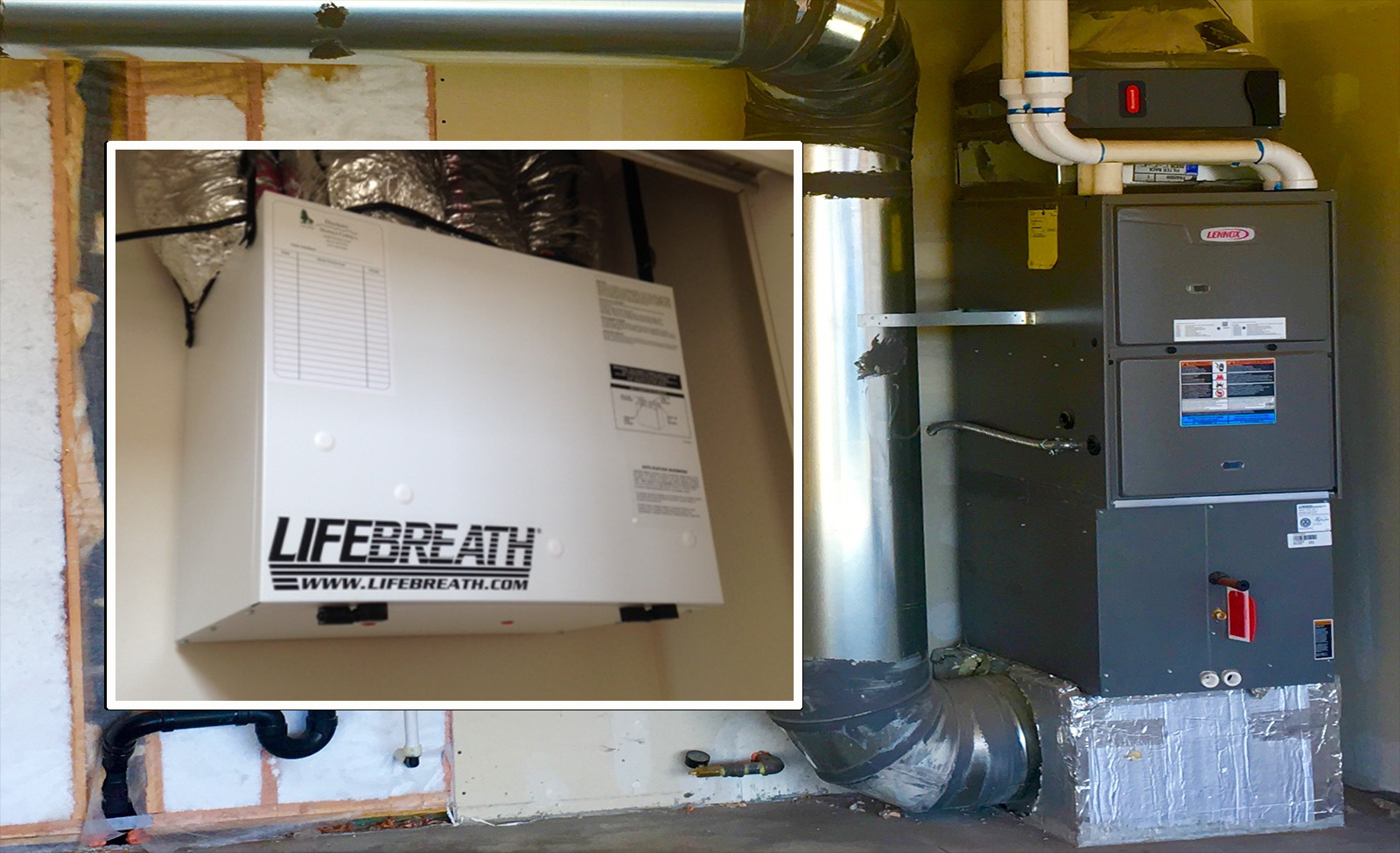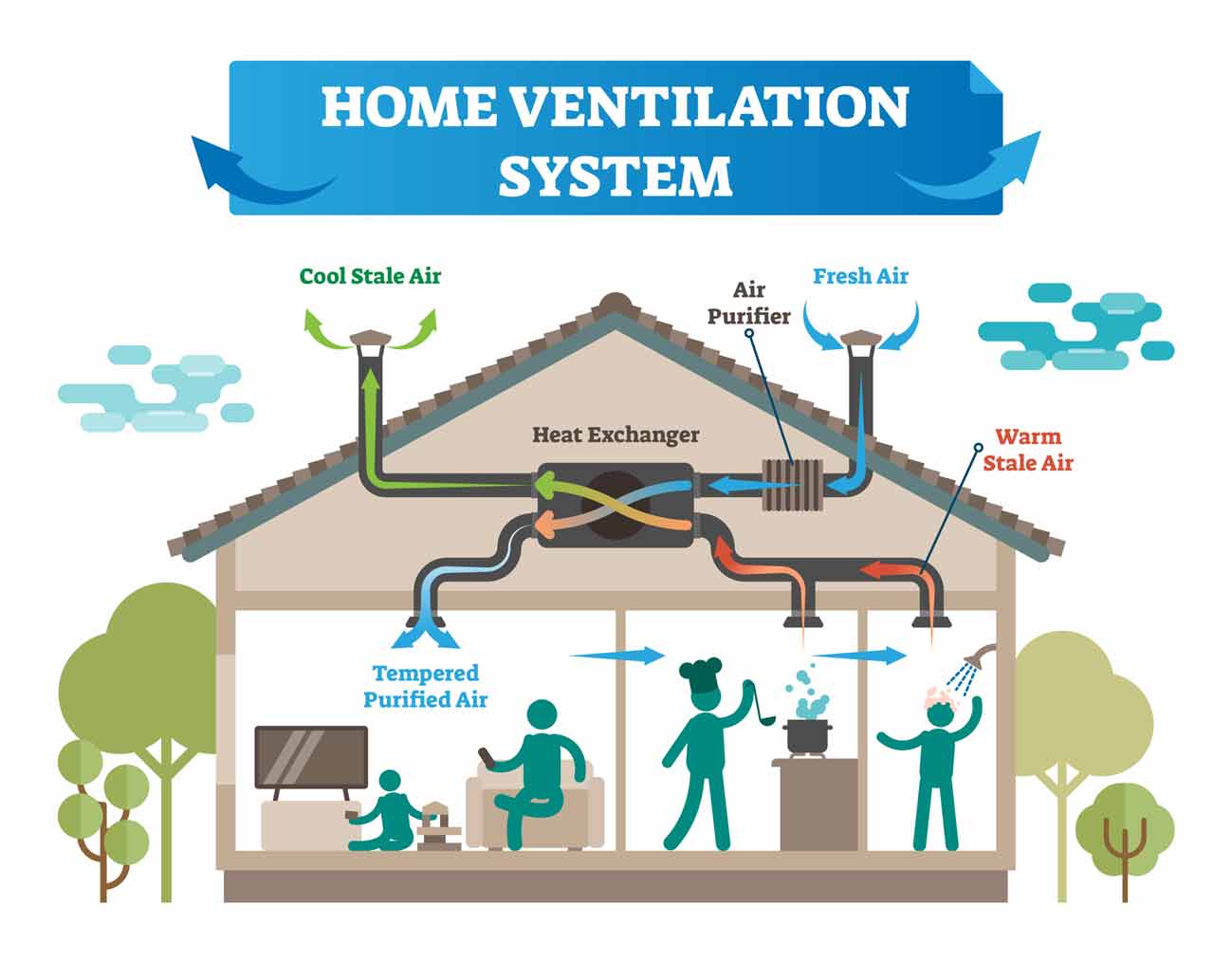Revealing the Key Conveniences and Uses of Heat Recovery Ventilation in Lasting Layout
Heat Recovery Ventilation (HRV) systems play an essential duty in lasting design. They help with a continuous exchange of stagnant indoor air with fresh outdoor air, significantly boosting interior air high quality. HRVs contribute to power efficiency by redeeming heat from tired air, which can lower utility prices. Understanding the complex advantages and applications of HRVs discloses their significance in contemporary design. What various other benefits do these systems use in the pursuit of sustainability?
Comprehending Heat Recovery Ventilation Equipments
Heat recovery ventilation (HRV) systems are developed to enhance interior air quality while decreasing energy loss. These systems use a mechanical air flow approach to exchange stagnant indoor air with fresh outside air, ensuring a constant supply of tidy air. By capturing warm from the exhaust air, HRVs prerequisite inbound air, decreasing the need on home heating and cooling systems. This procedure not just enhances thermal convenience yet additionally adds to energy efficiency in domestic and commercial buildings. In addition, HRV systems help control humidity degrees and reduce interior toxins, promoting a healthier living setting. Their calculated execution is vital for attaining lasting layout objectives, as they supply a balance in between power preservation and resident health.
How HRV Systems Job
While several may be familiar with ventilation systems, recognizing just how warmth healing air flow (HRV) systems run is necessary for appreciating their advantages. HRV systems operate by trading stagnant interior air with fresh outside air while transferring heat in between the two streams. This procedure takes place in a warm exchanger, where warm from the outbound air heats the incoming air during colder months, reducing energy loss. On the other hand, in warmer months, the system can cool incoming air using the cooler outward bound air. HRVs are outfitted with followers to assist in air flow and filters to eliminate particulates, making certain a constant, well balanced air flow process. This innovative style not only enhances power performance however also adds to keeping a comfortable interior atmosphere.
Enhancing Indoor Air High Quality
Indoor air top quality can considerably affect health and well-being, making effective air flow necessary in contemporary homes. Heat Recovery Ventilation (HRV) systems play a vital role in keeping indoor air high quality by constantly trading stagnant interior air with fresh outside air. This process not just decreases airborne toxins however also decreases moisture degrees, which can cause mold and mildew growth and respiratory issues. HRV systems filter inbound air, getting rid of allergens and particulates, therefore supplying a healthier living atmosphere. Furthermore, these systems aid eliminate smells and unpredictable natural substances (VOCs) frequently located in family items. By guaranteeing a consistent circulation of tidy air, HRV systems add to an overall better interior ambience, advertising comfort and well-being for residents.
Power Effectiveness and Cost Savings
Power performance stands apart as a considerable benefit of Heat Recovery Ventilation (HRV) systems. By catching and recycling the heat from exhausted indoor air, HRVs decrease the energy needed for home heating incoming fresh air, bring about reduced power consumption. This performance converts right into lower energy costs, offering considerable price financial savings for homeowners and companies alike. Furthermore, HRV systems frequently certify for energy performance rewards and discounts, even more boosting their financial appeal. Over time, the initial financial investment in HRV modern technology can result in a desirable roi with decreased energy expenditures. The assimilation of HRV systems not just promotes lasting style however likewise gives a functional option for attaining long-term power savings and monetary advantages.
Environmental Advantages of HRV

A wide variety of ecological benefits occurs from the implementation of Heat Recovery Ventilation (HRV) systems. By successfully moving heat from exhaust air to inbound fresh air, HRVs significantly minimize the energy needed for heating and cooling down areas. This power efficiency equates to decrease greenhouse gas exhausts, adding to a decrease in the total carbon footprint of buildings. Furthermore, HRV systems enhance interior air top quality by constantly circulating fresh air, thereby lowering the concentration of indoor toxins and allergens. Furthermore, the reduction in energy usage help in preserving all-natural resources, making HRVs an important component of sustainable layout. In general, the environmental advantages of HRVs play a crucial role in promoting a much healthier planet and promoting eco-friendly structure methods.
Versatile Applications in Modern Style
Heat recovery ventilation (HRV) systems are increasingly being integrated right into both residential and business building jobs. In domestic settings, HRVs improve indoor air top quality while making the most of energy efficiency. Meanwhile, in industrial rooms, these systems maximize ventilation methods, showing their convenience in modern building applications.
Residential Projects Assimilation
While modern design progressively highlights sustainability, the integration of heat healing air flow systems in residential projects has become a practical option for enhancing interior air top quality and energy efficiency. These systems efficiently move warmth from exhaust air to incoming fresh air, lessening energy loss and minimizing home heating or cooling down needs. In new builds and retrofits alike, heat healing ventilation can be effortlessly incorporated, supplying homeowners with a much healthier living atmosphere while reducing energy prices. In addition, with increasing awareness of environmental impacts, more designers and contractors are identifying the lasting advantages of these systems. Because of this, heat recovery air flow has come to be an important component of sustainable residential design, showcasing versatility and commitment to environmentally friendly methods.
Industrial Areas Optimization
As modern commercial spaces progress to fulfill the needs of sustainability and efficiency, the application of warm recuperation air flow systems becomes a crucial strategy for enhancing indoor environments. These systems assist in the exchange of stagnant indoor air with fresh outdoor air while redeeming heat energy, considerably reducing power consumption. This not just improves comfort for occupants yet additionally aids in reducing operational costs. Versatile applications can be observed in offices, retail areas, and universities, where air quality and temperature level control are critical. In addition, incorporating heat recuperation ventilation lines up with eco-friendly structure certifications, even more advertising environmental obligation. Eventually, embracing such systems in business design not just adds to sustainability objectives but also fosters much healthier, extra effective rooms for individuals.
Incorporating HRV Into Sustainable Style Practices
Integrating warmth browse around here healing air flow (HRV) systems right into lasting layout techniques supplies considerable advantages in power efficiency and interior air quality. By utilizing HRV, designers can create cost-effective solutions that not only minimize power consumption but likewise enhance the general convenience of interior atmospheres. This placement with sustainability objectives placements HRV as an essential component in contemporary architectural techniques.
Power Efficiency Enhancement
By including heat recuperation ventilation (HRV) systems into lasting style methods, architects and home builders can substantially enhance power performance in modern building and constructions. HRV systems work by recording heat from outgoing stagnant air and transferring it to incoming fresh air, decreasing the energy required for home heating or cooling interior areas. This process not just reduces dependence on standard cooling and heating systems but likewise decreases total power consumption. Furthermore, HRV Your Domain Name systems can help preserve a consistent interior temperature level, minimizing peak energy needs. By incorporating these systems, buildings can attain substantial reductions in energy expenses and carbon footprints, lining up with sustainability goals. Ultimately, HRV innovation stands for a useful option for improving power effectiveness in the built setting, promoting more accountable source use.
Indoor Air Top Quality Renovation
Just how can heat healing air flow (HRV) systems contribute to remarkable indoor air quality in modern buildings? HRV systems effectively exchange stale interior air with fresh outdoor air while recuperating warmth energy, reducing temperature changes. This procedure decreases the focus of indoor pollutants, such as unpredictable natural compounds (VOCs), irritants, and dampness, which can degrade air quality and impact occupant health. By maintaining perfect humidity degrees and ensuring a continuous supply of clean air, HRVs help create a healthier indoor atmosphere. In addition, these systems can be incorporated web link into sustainable layout techniques, promoting power performance together with boosted air quality. HRV Heat Recovery Ventilation. Subsequently, HRV technology plays an essential duty in advancing total owner comfort and well-being in modern building styles
Economical Style Solutions

Regularly Asked Inquiries
What Upkeep Is Needed for Heat Recovery Ventilation Equipments?

Maintenance for warm recovery air flow systems commonly involves normal filter replacements, cleansing of warmth exchangers, evaluation of followers and ducts, and making sure correct drainage. These tasks aid preserve performance and prolong the system's life expectancy over time.
Can HRV Solutions Be Mounted in Existing Buildings?
Heat recovery ventilation systems can undoubtedly be installed in existing buildings. HRV Heat Recovery Ventilation. Retrofitting needs mindful planning and evaluation of the structure's format, ensuring compatibility with present systems while taking full advantage of power performance and indoor air quality
Just How Do HRV Systems Impact Noise Levels Inside Your Home?
HRV systems can affect interior sound levels by introducing noise from outside resources through ventilation. Nevertheless, high-quality installations typically integrate sound-dampening attributes, decreasing sound influence while giving effective air exchange and preserving comfort inside.
Exist Any Kind Of Disadvantages to Making Use Of HRV Solutions?
The drawbacks of making use of HRV systems consist of prospective high initial costs, upkeep obstacles, and the opportunity of decreased indoor air quality if filters are sporadically changed, which can bring about problems with moisture levels.
Exactly how Do I Select the Right HRV System for My Needs?
Picking the ideal warmth recuperation ventilation system entails examining particular needs, such as constructing dimension, climate, and energy performance objectives. Additionally, assessing system functions, installation needs, and upkeep considerations is crucial for peak performance and contentment.